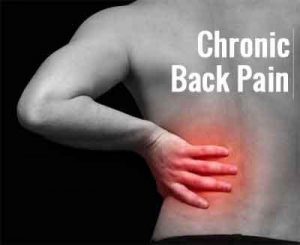- Home
- Editorial
- News
- Practice Guidelines
- Anesthesiology Guidelines
- Cancer Guidelines
- Cardiac Sciences Guidelines
- Critical Care Guidelines
- Dentistry Guidelines
- Dermatology Guidelines
- Diabetes and Endo Guidelines
- Diagnostics Guidelines
- ENT Guidelines
- Featured Practice Guidelines
- Gastroenterology Guidelines
- Geriatrics Guidelines
- Medicine Guidelines
- Nephrology Guidelines
- Neurosciences Guidelines
- Obs and Gynae Guidelines
- Ophthalmology Guidelines
- Orthopaedics Guidelines
- Paediatrics Guidelines
- Psychiatry Guidelines
- Pulmonology Guidelines
- Radiology Guidelines
- Surgery Guidelines
- Urology Guidelines
Unstable shoes with curved soles reduce chronic low back pain

Juan Francisco Lisón and Pablo Salvador with other researchers of Valencia's CEU Cardenal Herrera University studied the impact of rocker bottom shoes on low back pain.They have confirmed that unstable shoes with curved soles reduce chronic low back pain by strengthening back muscles and improving the spine's curvature. The results of this new study have been published in the Q1 edition of scientific magazine Clinical Rehabilitation.
As the coordinator of the CEU UCH master's degree, Pablo Salvador, explains, "patients with chronic low back pain are usually advised to perform exercises to strengthen the muscles in their back, which improve stability of the spine in the lower back area, although it is always hard to make sure they comply with this type of exercises. What this new study shows is that the use of unstable shoes for several hours during a patient's day-to-day life, without any other specific exercises, effectively contributes to the muscular strengthening of their back and improves the degree of curvature of the spine in the lumbar area, thus helping to reduce chronic pain."According to researchers unstable shoes improve the strength of back muscles in order to maintain balance and stability when walking and this muscular strengthening contributes to reducing low-intensity chronic low back pain, which can be disabling for those who suffer it.
Six hours a day
Forty patients with low-intensity chronic low back pain took part in the CEU UCH's study. Half of them wore this type of shoes with curved soles for four weeks, and the other half used their normal shoes. Researchers evaluated the degree of activation of the back muscles that stabilise the lumbar area with electromyography, specifically, the rectus abdominis, external oblique and internal oblique of the abdomen, as well as the erector spinae.
The research team, composed of teachers and students of the master's degree, also evaluated the curvature degree of the lower spine while wearing rocker bottom shoes, compared to ones with flat soles. These physical results were then contrasted with the degree of pain and disability expressed by the patients, using the internationally-validated Roland-Morris Disability questionnaire.
CEU UCH teacher Pablo Salvador is the author of the first doctoral thesis on the subject, under the leadership of teacher Juan Francisco Lisón. And both are co-authors of the previous study published in the European Journal of Physical Rehabilitation and Medicine. They stress that the results of their latest work, now published in Clinical Rehabilitation, "have allowed us to confirm that everyday use of rocker bottom shoes for several hours a day reduces the disability suffered by patients with chronic low back pain. The next step is to increase the number of participants and confirm these effects over a longer period of time in future studies within this same line of research of the Master of Sports Physiotherapy degree of the CEU UCH."
CEU UCH teachers Pablo Salvdaor, of the Department of Physiotherapy, Juan Francisco Lisón, and Julio Doménech, of the Department of Medicine of the CEU UCH, have collaborated with Daniel Sánchez Zuriaga, of the Anatomy Department of the Universitat de València along with CEU UCH Sports Physiotherapy master's degree graduates Borja Ortega Santana, Álvaro Antón Nogués, Palmy González Requena and Cristina Vera Hervás, who crafted their End Of Master's Degree projects based on the results of this research, financed by the CEU Cardenal Herrera University and the Instituto de Salud Carlos III of Madrid.

Disclaimer: This site is primarily intended for healthcare professionals. Any content/information on this website does not replace the advice of medical and/or health professionals and should not be construed as medical/diagnostic advice/endorsement or prescription. Use of this site is subject to our terms of use, privacy policy, advertisement policy. © 2020 Minerva Medical Treatment Pvt Ltd